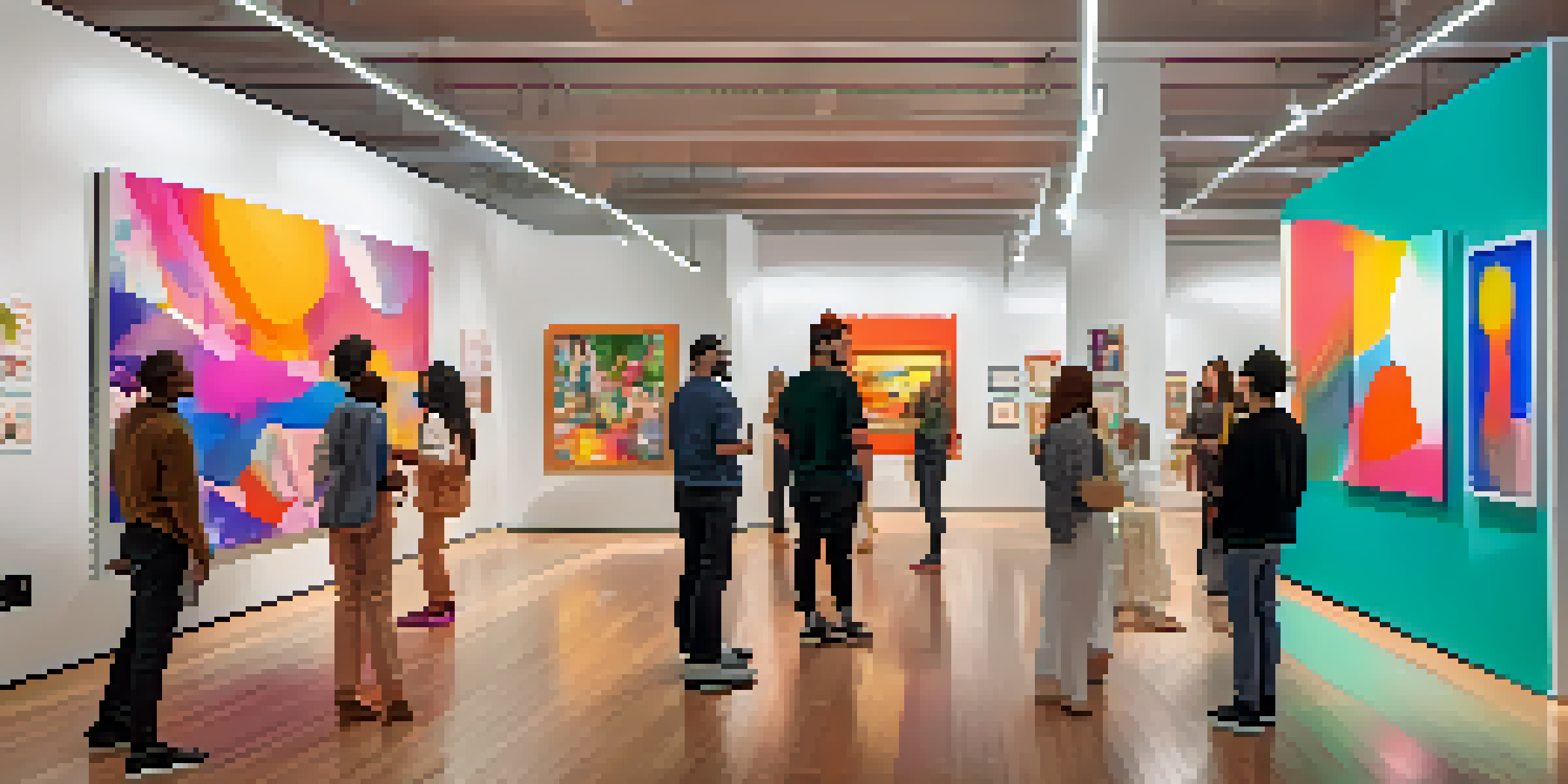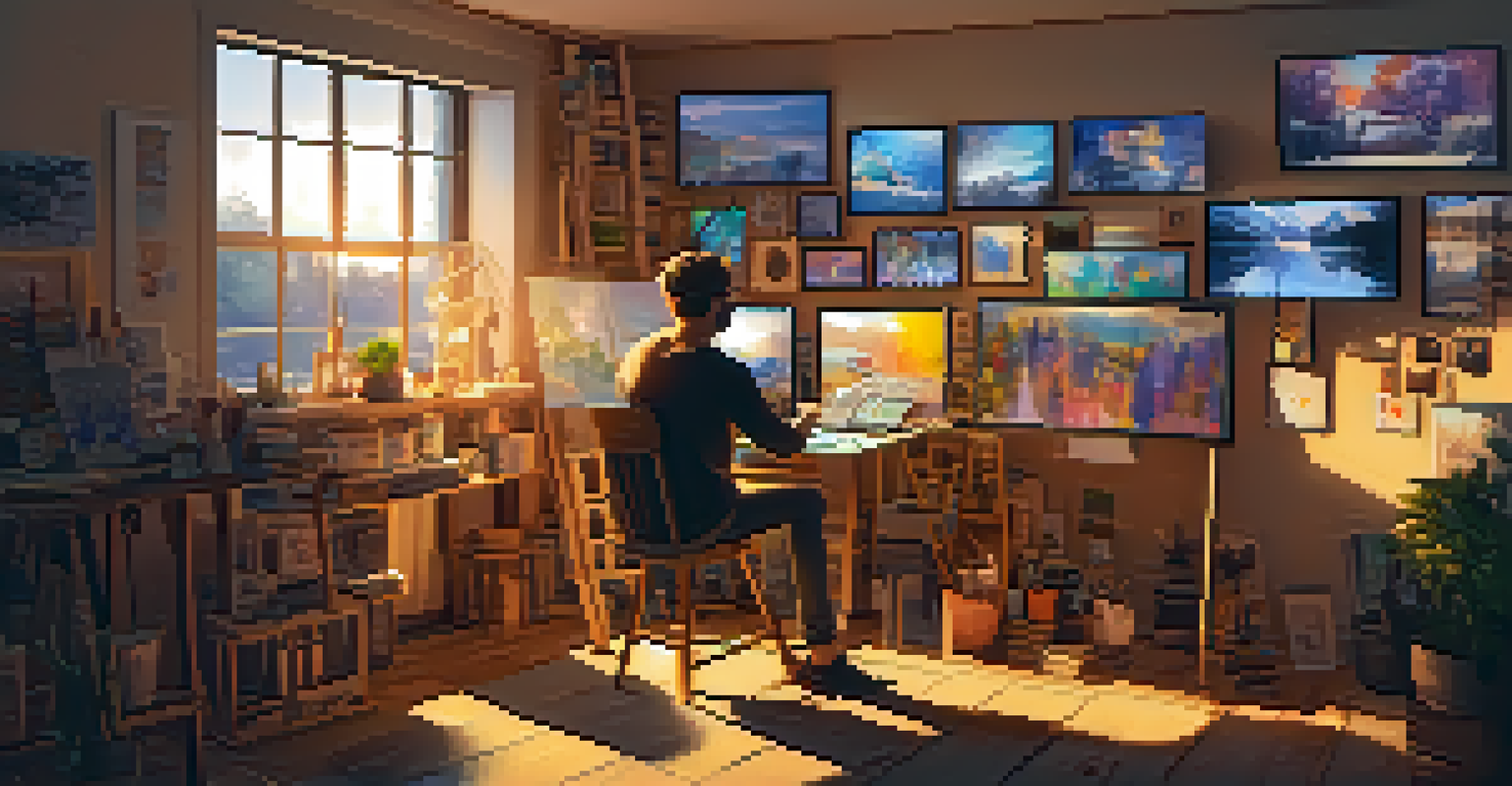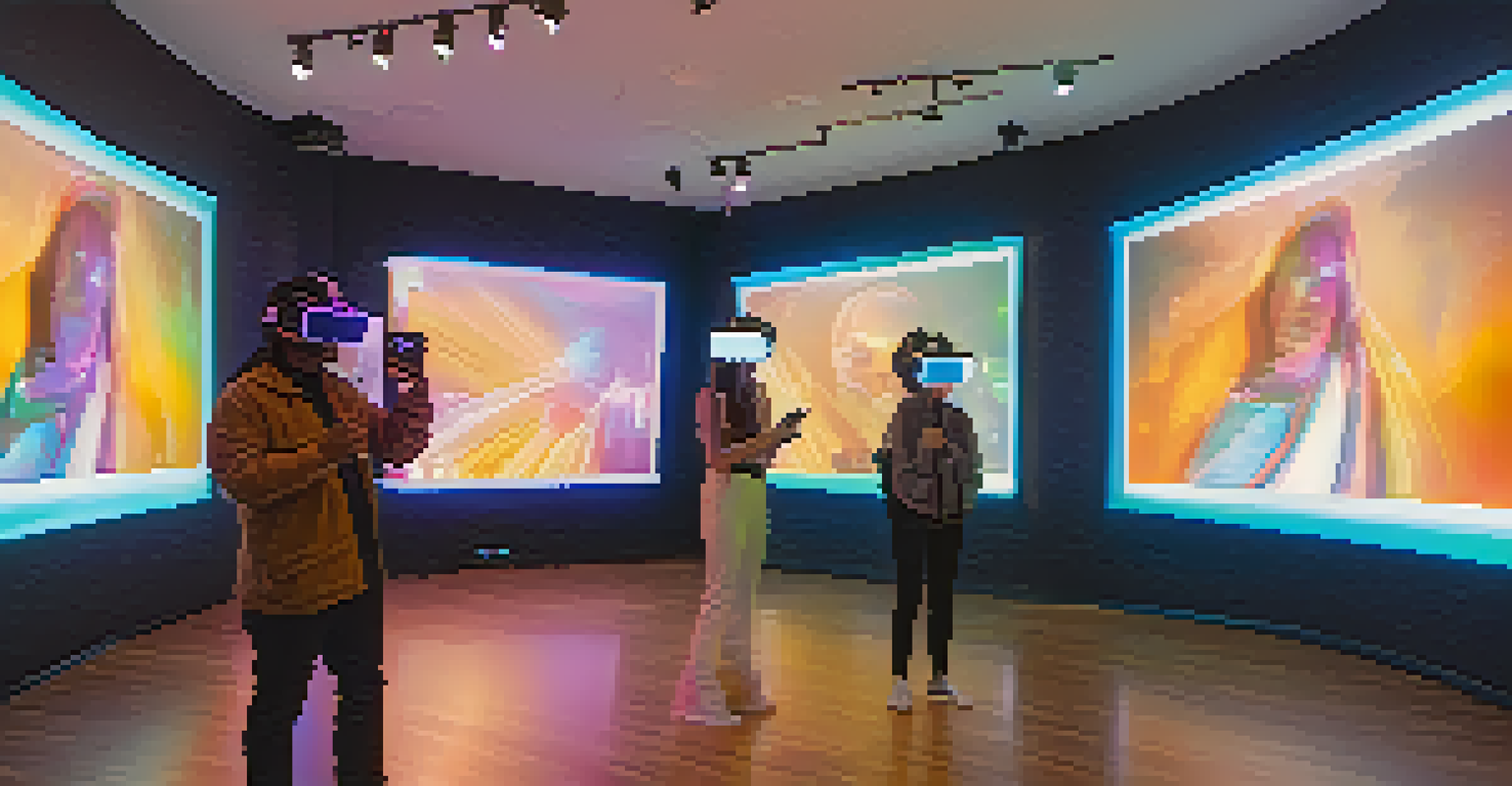NFTs: Revolutionizing Ownership and Authenticity in Art

Understanding NFTs: The Basics Explained
NFTs, or non-fungible tokens, are unique digital assets that represent ownership of specific items, often in art, music, or gaming. Unlike cryptocurrencies like Bitcoin, which are interchangeable, each NFT has distinct information that makes it one-of-a-kind. This uniqueness allows artists to tokenize their work, providing a digital certificate of authenticity that can’t be replicated.
NFTs are not just a trend; they represent a new frontier in how we perceive ownership and value in the digital age.
Imagine owning a rare baseball card or a signed piece of artwork; that’s essentially what NFTs offer in the digital realm. They serve as a bridge between creators and collectors, ensuring that artists receive credit and compensation for their work. This shift is not just about ownership; it’s about recognizing the value of digital creations in an increasingly online world.
As the digital landscape evolves, understanding how NFTs function is crucial for both artists and collectors. By grasping the basics of NFTs, you can better navigate this exciting new frontier and appreciate the potential they hold for redefining ownership in art.
The Role of Blockchain in Authenticating Art
At the heart of NFTs lies blockchain technology, a decentralized digital ledger that records transactions across many computers. This ensures that once an NFT is created, its ownership history is transparent and immutable. For artists, this means they can prove the authenticity of their work, providing buyers with peace of mind about what they are purchasing.

Think of blockchain as a public library where every book has a unique identification number. Whenever someone borrows a book, it’s logged, making it easy to trace ownership. In the art world, this traceability is vital, as it helps combat forgery and theft, two issues that have plagued artists for centuries.
NFTs Redefine Digital Ownership
NFTs provide a unique way for digital artists to prove ownership and authenticity of their work, bridging the gap between creators and collectors.
By utilizing blockchain, NFTs not only enhance the security of digital art but also establish a trust framework between artists and collectors. This paradigm shift is empowering artists, allowing them to maintain control over their creations and how they are sold.
How NFTs Empower Artists and Creators
One of the most significant impacts of NFTs is how they empower artists by providing direct access to their audience. In traditional art markets, artists often rely on galleries or agents to sell their work, which can limit their reach and earnings. NFTs eliminate the middleman, enabling artists to connect directly with buyers and retain a larger share of the profits.
The art world is experiencing a revolution, and NFTs are at the forefront of this transformation, enabling artists to reclaim their power.
For example, an artist can mint an NFT of their artwork and sell it on a digital marketplace without needing a gallery. This democratization of the art world allows emerging artists to showcase their work globally, breaking down barriers that once existed. It’s like opening the doors to a massive art fair where anyone can exhibit their creations.
Moreover, NFTs can include smart contracts that automatically pay artists a percentage of future sales whenever their work is resold. This means that artists can continue to benefit from their creations long after the initial sale, reshaping the financial landscape of the art world.
The Appeal of Digital Scarcity in Art
In the digital age, the concept of scarcity can seem elusive. Unlike physical art, digital files can be copied infinitely, making it challenging to establish value. NFTs introduce the idea of digital scarcity, allowing artists to limit the number of copies of their work, much like a limited edition print.
Imagine a famous painting with only a handful of replicas; that rarity drives up its value. NFTs function similarly by allowing artists to create a limited number of tokens for each artwork, making them more desirable to collectors. This scarcity creates a sense of urgency, prompting buyers to act quickly before a piece sells out.
Blockchain Ensures Transparency
The use of blockchain technology guarantees a transparent and immutable record of NFT ownership, helping to combat forgery and theft in the art world.
By fostering this sense of exclusivity, NFTs not only enhance the value of digital art but also encourage collectors to invest in pieces they genuinely love. This shift in mindset is reshaping how we perceive and value digital creations.
Challenges Facing NFTs in the Art World
Despite their benefits, NFTs are not without challenges. The NFT market can be volatile, with prices fluctuating wildly based on trends and demand. This unpredictability can make it difficult for both artists and collectors to gauge the true value of a piece, leading to potential pitfalls in investment.
Another concern is the environmental impact of blockchain technology, especially those that rely on energy-intensive proof-of-work systems. Critics argue that the carbon footprint associated with minting and trading NFTs undermines the art community's commitment to sustainability. It’s a complex issue that calls for a balance between innovation and responsibility.
As the NFT landscape matures, addressing these challenges will be crucial to ensuring its long-term viability. Artists, collectors, and platforms must work together to find solutions that promote sustainability while maintaining the excitement and potential of this new art form.
The Future of NFTs in the Art Industry
Looking ahead, NFTs are poised to play a pivotal role in the evolution of the art industry. As more artists and collectors embrace this technology, we can expect to see innovative uses of NFTs that go beyond mere collectibles. For instance, virtual galleries and immersive experiences may become commonplace, allowing people to enjoy art in new and engaging ways.
Think about how streaming services transformed music consumption; NFTs could similarly revolutionize how we experience art. With virtual reality and augmented reality technologies on the rise, the possibilities for showcasing NFT art are virtually limitless. This integration could also attract a younger audience, eager to explore art in a digital format.
Artists Gain More Control
NFTs empower artists by allowing them to sell directly to buyers and benefit from future sales through smart contracts, reshaping the traditional art market.
Ultimately, the future of NFTs in art will hinge on the continued collaboration between artists, technologists, and collectors. By fostering an environment of creativity and innovation, the art world can leverage NFTs to create a more inclusive and dynamic landscape.
Conclusion: Embracing the NFT Revolution
The rise of NFTs marks a significant turning point in the art world, reshaping how we think about ownership and authenticity. As artists gain more control over their work and collectors find new ways to engage with art, it’s clear that this revolution is just beginning. Embracing this change can lead to exciting opportunities for everyone involved.
By understanding the nuances of NFTs, both artists and collectors can navigate this burgeoning market with confidence. Whether you’re an artist looking to showcase your work or a collector eager to invest, the tools are now at your fingertips. It's an invitation to be part of a transformative journey that celebrates creativity in the digital age.

As we look to the future, it’s essential to remain open-minded and adaptable. The NFT landscape will continue to evolve, presenting new challenges and opportunities. By embracing this revolution, we can all play a part in redefining the art world for generations to come.